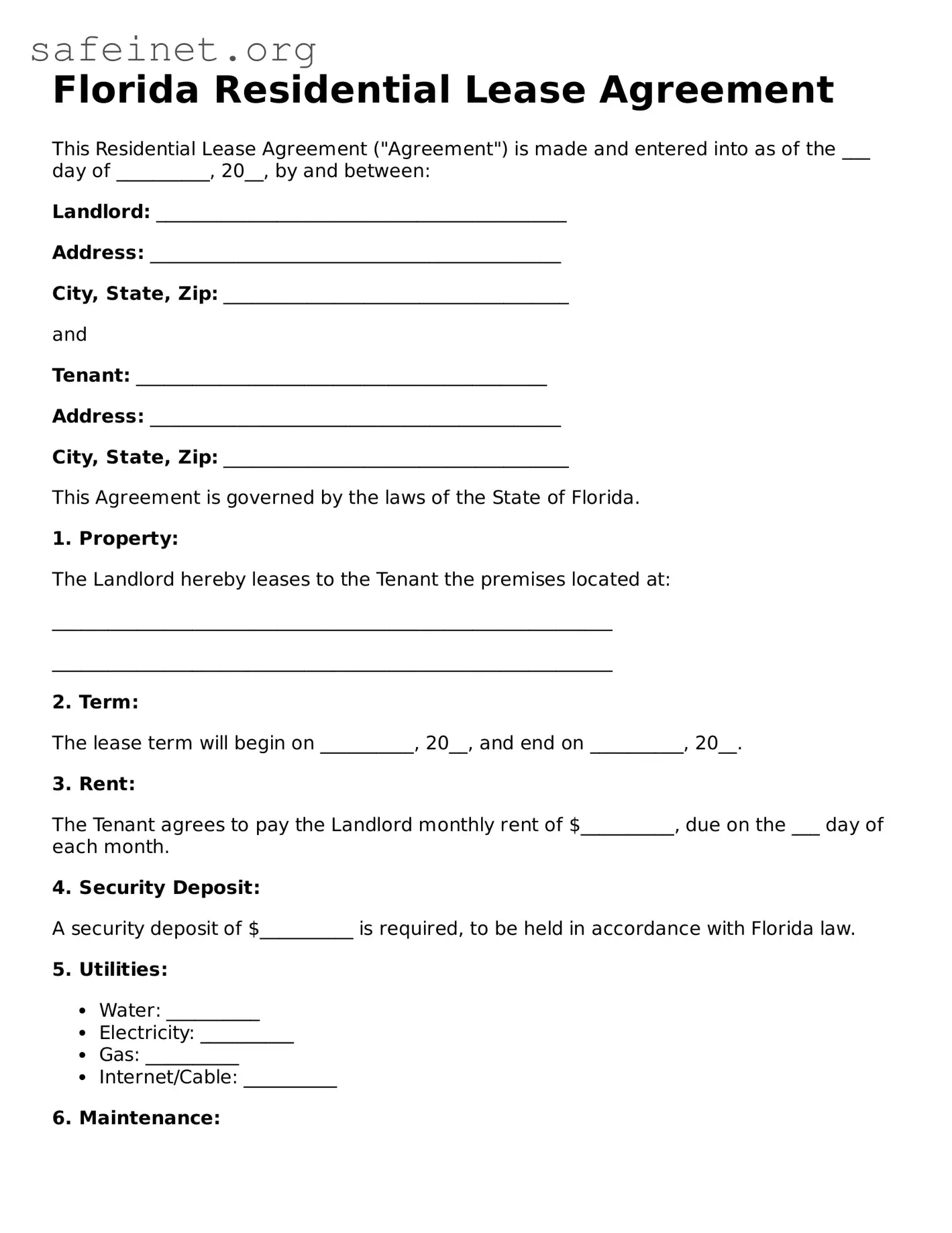Florida Residential Lease Agreement
This Residential Lease Agreement ("Agreement") is made and entered into as of the ___ day of __________, 20__, by and between:
Landlord: ____________________________________________
Address: ____________________________________________
City, State, Zip: _____________________________________
and
Tenant: ____________________________________________
Address: ____________________________________________
City, State, Zip: _____________________________________
This Agreement is governed by the laws of the State of Florida.
1. Property:
The Landlord hereby leases to the Tenant the premises located at:
____________________________________________________________
____________________________________________________________
2. Term:
The lease term will begin on __________, 20__, and end on __________, 20__.
3. Rent:
The Tenant agrees to pay the Landlord monthly rent of $__________, due on the ___ day of each month.
4. Security Deposit:
A security deposit of $__________ is required, to be held in accordance with Florida law.
5. Utilities:
- Water: __________
- Electricity: __________
- Gas: __________
- Internet/Cable: __________
6. Maintenance:
The Tenant is responsible for maintaining the cleanliness of the premises and will report any maintenance issues to the Landlord promptly.
7. Modifications:
No modifications to the property may be made without the prior written consent of the Landlord.
8. Termination:
This lease may be terminated by either party with a written notice of at least ___ days prior to the intended termination date.
9. Governing Law:
This Agreement shall be governed by the laws of Florida. Any disputes arising under this Agreement shall be resolved in accordance with Florida law.
IN WITNESS WHEREOF, the parties have executed this Residential Lease Agreement as of the date first above written.
Landlord Signature: _______________________________
Date: ___________________________
Tenant Signature: _______________________________
Date: ___________________________
